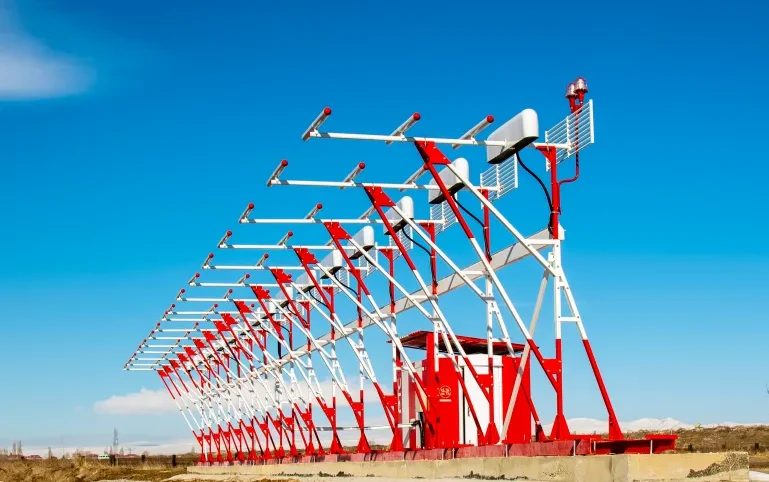India and Russia continue to expand bilateral cooperation to new areas with the signing of an agreement on unified ground radio equipment for landing, navigation and air traffic control systems.
Russia's Scientific and Production Corporation 'Radio Technical Systems' (NPO RTS) has announced the signing of a large-scale contract with the Airports Authority of India (AAI) for the supply of radio equipment.
Under the contract, the Russian company will manufacture 34 sets of instrument landing system ILS 734 for the modernization of 24 Indian airports.
The Russian manufacturer received the right to conclude a contract based on the results of a global tender, in which the world's largest suppliers of radio equipment took part. The increased interest of leading manufacturers in the competition was due to the scale of the project – the purchase lot of landing systems is the largest in the world over the past few years.

"The contract between NPO 'RTS' and AAI has become a breakthrough for Russian business in the highly competitive market of ground-based radio equipment in India. There is no doubt that the successful execution of the contract will open up new opportunities for the implementation of joint projects to modernize Indian airport infrastructure," Denis Alipov, the Russian
Ambassador to India, said in a statement.
According to the contract, the first part of landing systems ILS 734 must be shipped before November this year. Payments within the transaction will be carried out in national currencies.
The Research and Production Association 'Radio Engineering Systems' (NPO 'RTS') was formed in 2003 by a group of developers of equipment for landing, navigation and air traffic control systems. Today, the enterprise fulfills orders from Russia's Air Transport Agency, the Ministry of Defence of the Russian Federation, the aviation base of the Federal Security Service (FSB), and state space corporation Roscosmos.
The company has implemented dozens of projects for the supply of ground-based radio equipment in Russia and abroad, including the CIS countries.
"Customers highly appreciate capabilities of our products, including the instrumental landing system ILS 734, which meets the strictest international requirements and standards, high efficiency in the fulfillment of contractual obligations, high-quality warranty and after-sales service," commented Aleksandr Dolmatov, the CEO of NPO 'RTS'.

The instrumental landing system ILS 734 has been certified by the Interstate Aviation Committee. It allows for the landing of equipped aircraft with a runway visual range of minimum 50 meters and a decision height of minimum 15 meters. The landing system is subject to increased requirements for the reliability and stability of the output parameters of the equipment.
The Airports Authority of India (AAI) manages 137 airports, which includes 24 international airports, 10 Customs Airports, 80 domestic airports and 23 domestic civil enclaves at defence airfields. AAI also provides Air Traffic Management Services (ATMS) over entire Indian air space and adjoining oceanic areas with ground installations at all airports and 25 other locations to ensure safety of aircraft operations.
All major air routes over Indian landmass are radar-covered (29 radar installations at 11 locations) along with VOR/DVOR coverage (89 installations) co-located with Distance Measuring Equipment (90 installations). As many as 52 runways are provided with ILS installations with Night Landing Facilities at most of these airports and Automatic Message Switching System at 15 airports.
AAI's successful implementation of Automatic Dependence Surveillance System (ADSS), using indigenous technology, at Calcutta and Chennai Air Traffic Control Centres, gave India the distinction of being the first country to use this advanced technology in the South East Asian region thus enabling effective Air Traffic Control over oceanic areas using satellite mode of communication.
During the 21st India-Russia Annual Summit held in New Delhi last December, Prime Minister Narendra Modi and Russian President Vladimir Putin had discussed in detail collaboration and cooperation in new areas in future.
The Indian Space Research Organisation (ISRO) and Russia's federal space agency Roscosmos have already signed an agreement on 'Cooperation in Space' which targets cooperation in the exploration and use of outer space for peaceful purposes, as well as in the creation and operation of launch vehicles and ground-based space infrastructure.
Russia is also playing a significant role in India's first manned space mission Gaganyan which had kicked off in August 2018.
Also Read: After S-400 missiles and AK-203 rifles, Russia offers India its cutting-edge Armata tank technology




















